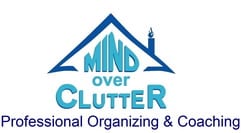Organizing your approach to handling e-mail
Harold Taylor is a time management expert. He produces a monthly newsletter. Here is one of his articles. I hope you enjoy it.
Managing E-mail
Do you respond to a lot more email messages than you originate? Are you deleting emails unanswered or unread? Are you spending so much time reacting to email that you don’t have time for creativity, relaxation and renewal? If so, calculate your “Reactive Ratio.”
Reactive Ratio
Count the total number of email messages you receive during a day. Include spam, egroup messages and newsletters whether you still read them or not. Divide the total number of incoming email messages by the number that you send during the day. The resulting ratio should be as low as possible.
You can easily calculate this ratio if you don’t delete or move anything until the end of the day – even those that you have answered. The next morning, quickly count the total number of emails received the previous day as well as those sent the same day.
If the ratio is high, take action by cancelling newsletters that you seldom read, get off groups you don’t participate in, place spam filters at higher levels, and get off mailing lists. Consider using a different email address for purchases to avoid spam. Question whether all incoming messages require a reply. For instance, don’t thank people for thanking you. Consider adding “No reply necessary” to many of your outgoing messages. And investigate apps such as “unroll.me.”
Control Outgoing Email
Your outgoing messages also consume time and generate incoming messages. So question whether a quick phone call is better. Don’t copy people who have no need for the information.Decide whether a quick phone call is more productive than sending an email. Click To Tweet
Reduce the Total Time Spent on Emailing
Even more important than your “Reactive Ratio” is the total time you spend on email each day. Keep messages brief. Use text replacement software for longer & repetitive replies such as instructions or directions. Allocate specific times to check and respond to email. This could be one hour late morning and one hour late afternoon. If you can get by with less time, so much the better. But don’t fragment your day by checking email every few minutes or every hour.
Click here to sign up for his newsletter
Share a hack that helps you to control the amount of time you spend on email.
 Julie Stobbe is a Trained Professional Organizer and Lifestyle Organizing Coach who brings happiness to homes and organization to offices, virtually using Zoom. She has been working with clients since 2006 to provide customized organizing solutions to suit their individual needs and situation. She uses her love of teaching to reduce clutter, in your home, office, mind and time. She guides and supports you to be accountable for your time, to complete projects and reach your goals. If you’re in a difficult transition Julie can coach you to break-free of emotional clutter constraining you from living life on your terms. Online courses are available to help instruct, coach and support your organizing projects. Get started by downloading Tips for Reorganizing 9 Rooms.
Julie Stobbe is a Trained Professional Organizer and Lifestyle Organizing Coach who brings happiness to homes and organization to offices, virtually using Zoom. She has been working with clients since 2006 to provide customized organizing solutions to suit their individual needs and situation. She uses her love of teaching to reduce clutter, in your home, office, mind and time. She guides and supports you to be accountable for your time, to complete projects and reach your goals. If you’re in a difficult transition Julie can coach you to break-free of emotional clutter constraining you from living life on your terms. Online courses are available to help instruct, coach and support your organizing projects. Get started by downloading Tips for Reorganizing 9 Rooms.
Contact her at julie@mindoverclutter.ca
Click here to learn more about her online course Create an Organized Home.
Twitter – Facebook – Facebook group Organizing Mind and Space




I think using filters can be helpful for managing emails. Create a few rules that will send the spam/advertisements into a different filter and they can be easily deleted in one fell swoop at the end of the day, and keep your more productive inbox manageable. Nice idea to calculate your ratio!
I agree filters are a good idea, but I have never been able to set them up effectively for my email system.
I love Harold and read his newsletter. He advice is always spot on and applicable to everyone.
I agree, he has stopped doing his newsletter for a while but he has started doing them again.
Harold is such a wise person and always shares excellent, no-nonsense advice. The “Reactive Ratio” is a concept I’d never heard of before. Doing that exercise is a useful way of determining if measures are needed to reduce incoming email. I also like Harold’s thoughtful question as to whether an email even needs a reply, and being encouraged to keep emails brief, or not thanking for a thank you an email. These are useful guidelines.
I don’t really like making phone calls but I have started to call people more often if I think trying to explain something in an email is too difficult. I really enjoy reading his newsletter. The most prestigious award in Professional Organizers in Canada is named after this man.